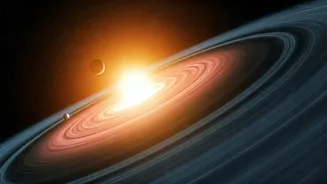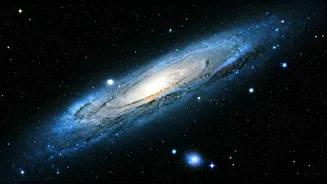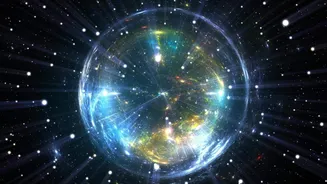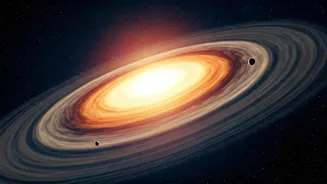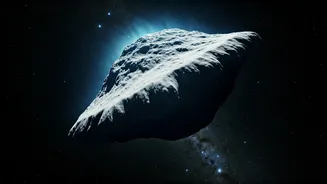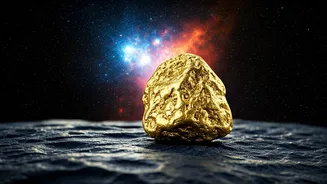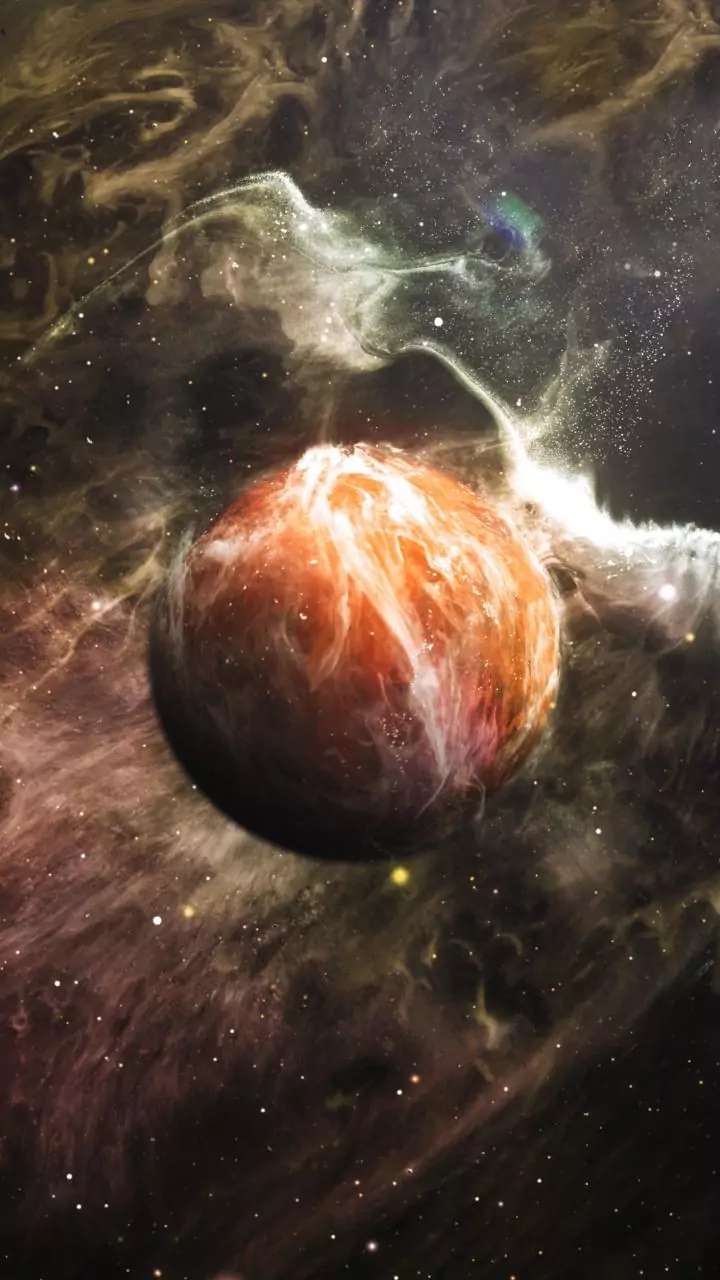Black Hole Echoes
Black holes, celestial entities with gravitational pulls so intense that nothing, not even light, can escape, are at the core of astronomical study. When
black holes merge, they create disturbances in the fabric of spacetime, known as gravitational waves. These waves spread outward like ripples in a pond. Scientists observed an event, like a bell, that resonated with such energy that they can understand the structure of the cosmos. These waves have provided unprecedented insights into the nature of these cosmic behemoths and the dynamics of the universe. The study into black holes continue to expand, offering an opportunity to analyze the deepest regions of the cosmos and the behaviors of light and matter under extraordinary conditions. Each observation not only confirms existing theories, but it also sparks new questions, driving researchers to probe the unexplored aspects of black hole behavior, like the effects of extreme gravity on quantum mechanics or the structure of the singularity at the center of the black hole.
Waves of Gravity
Gravitational waves, a theoretical concept predicted by Albert Einstein's theory of general relativity, are now a proven phenomenon that allow us to observe some of the universe’s most extreme events. They represent the distortion of spacetime, created by accelerating massive objects, like black holes colliding or neutron stars merging. These waves travel at the speed of light, reaching observatories on Earth as minuscule distortions. The detection of gravitational waves offers a new way to observe the universe, complementing traditional electromagnetic radiation. This approach has started to uncover several events that were previously invisible. For instance, scientists can study the dynamics of black hole mergers, which create gravitational waves with patterns that indicate the black holes' masses and spins. These measurements provide key information that helps us test Einstein's theory and explore the nature of gravity and the universe.
Dark Energy Unveiled
Dark energy is a perplexing component of the cosmos, accounting for approximately 68% of its total energy density, yet its nature remains largely unknown. It is the driving force behind the universe's accelerating expansion. This acceleration was revealed by observations of distant supernovae, which showed that the universe is not only expanding but also doing so at an increasing rate. The concept of dark energy is still being studied, and there are many theories. Cosmologists are exploring different models, like the cosmological constant and quintessence, to explain dark energy's behavior. Understanding dark energy is crucial. It could reveal the ultimate fate of the universe—whether it will continue to expand indefinitely, eventually leading to a cold, empty state, or if there is another possibility. This mystery compels the next generation of scientists.
Hubble's Enduring Legacy
The Hubble Space Telescope, launched in 1990, has completely changed astronomy. It has provided amazing insights into the universe. Throughout its 35 years of operation, it has captured images of galaxies, nebulae, and other celestial objects, making them more accessible than ever. Hubble's findings have confirmed key elements of cosmology, like the age of the universe. Beyond beautiful images, Hubble has enabled accurate measurements of cosmic distances, which led to a deeper knowledge of the universe. The telescope has helped us understand the behavior of black holes, the formation of stars, and the search for exoplanets, opening doors to new research paths. The data obtained from Hubble has also been used to study the chemical composition of galaxies, giving insight into how the universe has evolved. Its legacy is the foundation for future astronomical efforts.
Search for Extraterrestrial Life
The search for extraterrestrial life is a compelling area of modern scientific exploration. This pursuit ranges from examining the far side of the Moon to analyzing the atmospheric conditions of distant exoplanets. Scientists look for biosignatures, indicators of life such as certain chemical compounds that could only be produced by living organisms. The use of advanced telescopes, such as the James Webb Space Telescope, helps analyze the atmospheres of exoplanets in ways that were previously impossible. Researchers are also using advanced data analysis techniques to detect patterns in radio signals from space. Furthermore, the exploration for life extends to our own solar system. For example, studying the ice around baby stars may reveal clues to the water on Earth. The search for alien life is a global effort that has generated excitement and the potential to reshape our place in the universe.
Future Observatories
The Vera Rubin Observatory, currently under construction, is set to further revolutionize astronomy. Designed to conduct a 10-year all-sky survey, it will provide an unprecedented amount of data. This observatory's primary mission is to observe the distribution of dark matter and dark energy. However, it will also provide a wealth of data on other cosmic phenomena. It will identify and track millions of galaxies and asteroids. The observatory will generate a massive amount of data, which will demand new methods for data analysis and visualization. The Vera Rubin Observatory, with its innovative design and advanced capabilities, is expected to start taking data very soon, paving the way for exciting new astronomical discoveries and deepening our knowledge of the cosmos.


